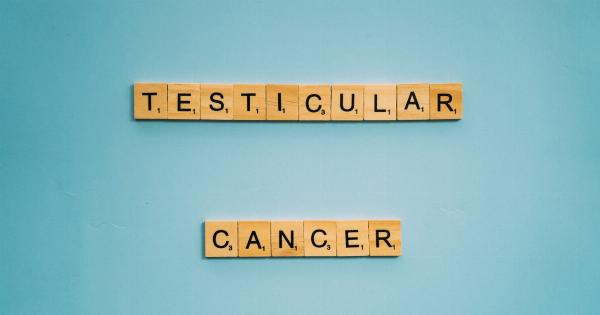A testicle twist, also known as testicular torsion, is a urological emergency that occurs when a testicle rotates and twists the spermatic cord, cutting off the blood supply to the testicle.
This condition primarily affects males, especially those in their adolescence. If not promptly treated, testicle twists can lead to severe complications such as loss of the affected testicle.
Causes of Testicle Twists
Testicle twists typically occur due to the improper attachment of the testicles within the scrotum. This allows the testicles to rotate freely, increasing the risk of twisting. Some potential causes include:.
- Anatomical abnormalities in the tissues surrounding the testicles
- Injury or trauma to the scrotum
- Rapid growth during puberty
Symptoms
Recognizing the symptoms of a testicle twist is crucial for early detection and treatment. Common signs and symptoms may include:.
- Sudden and severe testicular pain
- Sudden swelling of the scrotum
- Tenderness or redness of the scrotum
- Nausea and vomiting
Diagnosis
If a testicle twist is suspected, it is important to seek immediate medical attention. A healthcare provider will typically perform a physical examination and may order additional tests such as:.
- Ultrasound: This imaging test helps visualize the blood flow to the testicles.
- Doppler ultrasound: This specialized ultrasound technique assesses the blood flow specifically.
Treatment
Testicle twists require immediate surgical intervention to restore blood flow and prevent permanent damage to the testicle. The following treatment options may be considered:.
- Manual detorsion: In some cases, a healthcare professional may attempt to manually untwist the testicle by hand. This is typically done under anesthesia.
- Surgery: Surgical intervention is the most common treatment option. It involves untwisting the testicle and securing it in place to prevent future twisting. In severe cases where damage to the testicle is significant, removal of the affected testicle (orchidectomy) may be necessary.
Recovery and Follow-Up
After treatment, it is crucial to carefully follow any post-operative instructions provided by the healthcare provider. Recovery time can vary depending on the severity of the testicle twist and the individual’s overall health.
Follow-up appointments will be scheduled to monitor healing and ensure there are no complications.
Preventing Testicle Twists
While testicle twists may not always be preventable, taking certain precautions can help reduce the risk. These measures include:.
- Wearing protective gear during sports or activities that pose a risk of injury
- Seeking immediate medical attention for any scrotal injuries
- Regular testicular self-examination to detect any changes or abnormalities
Potential Complications
When left untreated, testicle twists can lead to severe complications, such as:.
- Loss of the affected testicle: If the blood supply is not restored within a few hours, permanent damage to the testicle may occur and require removal.
- Infertility: In some cases, testicle twists can affect fertility. Prompt diagnosis and treatment improve the chances of preserving fertility.
Seek Immediate Medical Attention
If you or someone you know experiences sudden and severe testicular pain or suspects a testicle twist, it is essential to seek immediate medical attention.
Prompt diagnosis and treatment significantly increase the chances of saving the affected testicle and reducing the risk of complications.





























